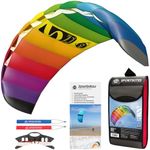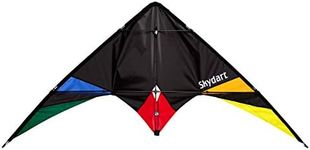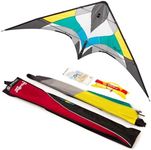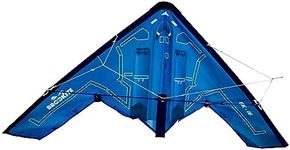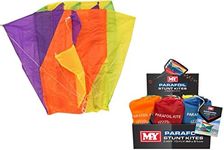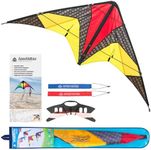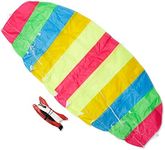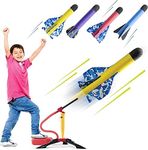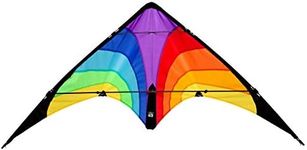Buying Guide for the Best Stunt Kites
Choosing the right stunt kite can greatly enhance your flying experience, whether you're a beginner or an experienced flyer. Stunt kites, also known as sport kites, are designed for performing tricks and maneuvers in the sky. When selecting a stunt kite, it's important to consider factors such as your skill level, the wind conditions in your area, and the type of tricks you want to perform. Understanding the key specifications of stunt kites will help you make an informed decision and ensure you have a kite that matches your flying style and environment.SizeThe size of a stunt kite is crucial as it affects the kite's performance and ease of control. Larger kites are generally more stable and easier to control, making them suitable for beginners. They also perform better in lighter winds. Smaller kites, on the other hand, are more agile and responsive, which is ideal for performing advanced tricks and flying in stronger winds. When choosing a size, consider your skill level and the typical wind conditions where you plan to fly. Beginners should start with a larger kite for stability, while more experienced flyers might prefer a smaller kite for agility.
MaterialThe material of a stunt kite affects its durability, weight, and performance. Common materials include ripstop nylon and polyester for the sail, and carbon fiber or fiberglass for the frame. Ripstop nylon is lightweight and durable, making it a popular choice for many kites. Polyester is also durable but can be heavier. Carbon fiber frames are strong and lightweight, providing excellent performance, while fiberglass is more flexible and forgiving, which can be beneficial for beginners. Consider the conditions you'll be flying in and your experience level when choosing materials. Beginners might opt for more durable materials, while experienced flyers might prioritize performance.
Wind RangeThe wind range of a stunt kite indicates the range of wind speeds in which the kite can be flown effectively. This is important because flying a kite in unsuitable wind conditions can lead to poor performance or even damage. Kites with a wide wind range are versatile and can be flown in various conditions, making them a good choice for beginners. If you live in an area with consistent wind conditions, you might choose a kite optimized for those specific conditions. Always check the wind range to ensure it matches the typical conditions where you plan to fly.
Control LinesControl lines are the lines that connect the kite to the flyer, allowing you to maneuver the kite. The length and material of the control lines can affect the kite's responsiveness and ease of control. Longer lines provide more control and are better for performing tricks, while shorter lines offer quicker response times, which can be challenging for beginners. The material should be strong and durable to withstand the tension during flight. Beginners should start with standard-length lines for easier control, while experienced flyers might experiment with different lengths to suit their flying style.
Skill LevelStunt kites are often categorized by skill level, which helps you choose a kite that matches your experience. Beginner kites are designed to be stable and easy to control, making them ideal for learning basic maneuvers. Intermediate kites offer more agility and responsiveness for those who have mastered the basics and want to learn more advanced tricks. Advanced kites are highly responsive and require precise control, suitable for experienced flyers looking to perform complex tricks. Assess your current skill level honestly to choose a kite that will provide a rewarding flying experience and help you progress.
